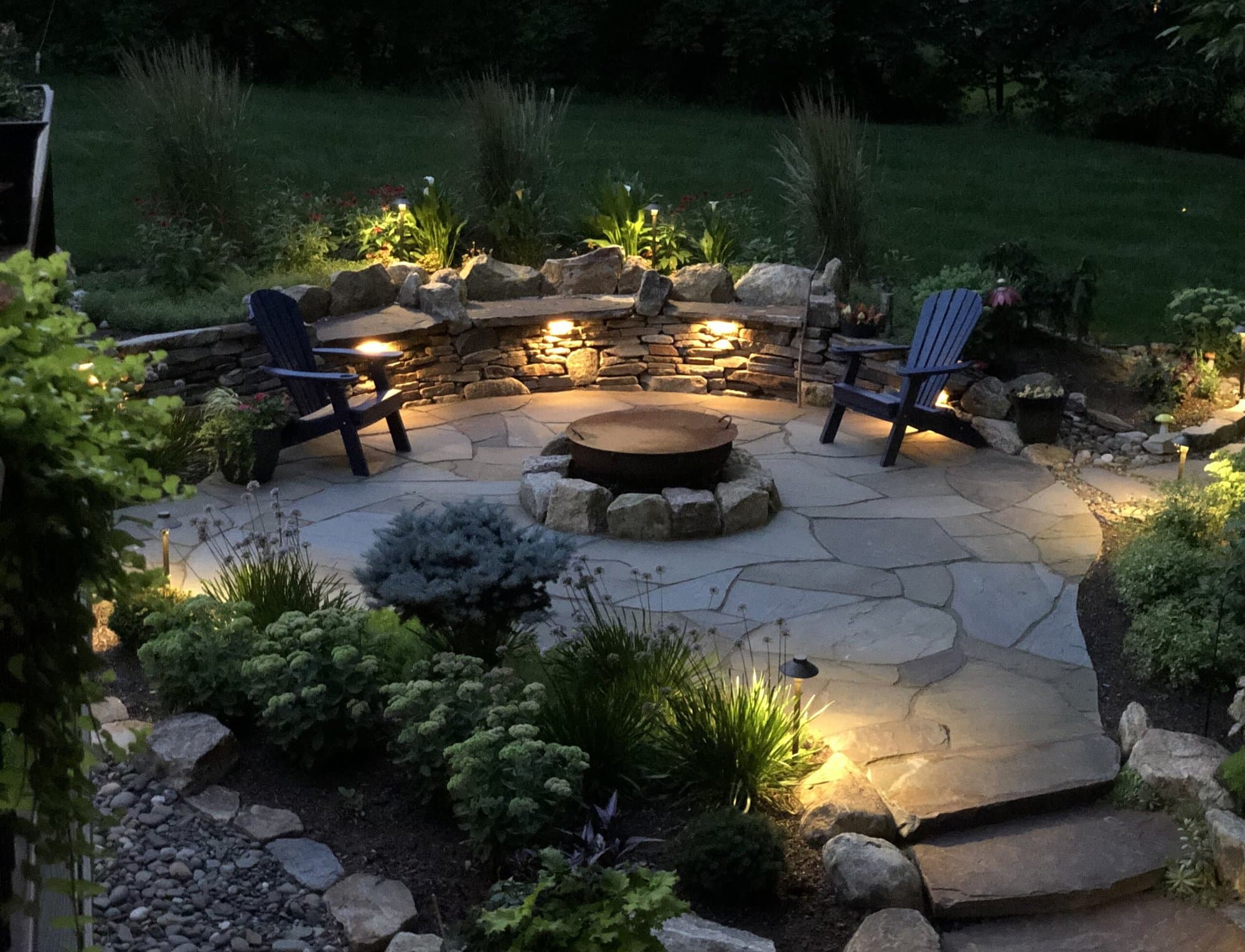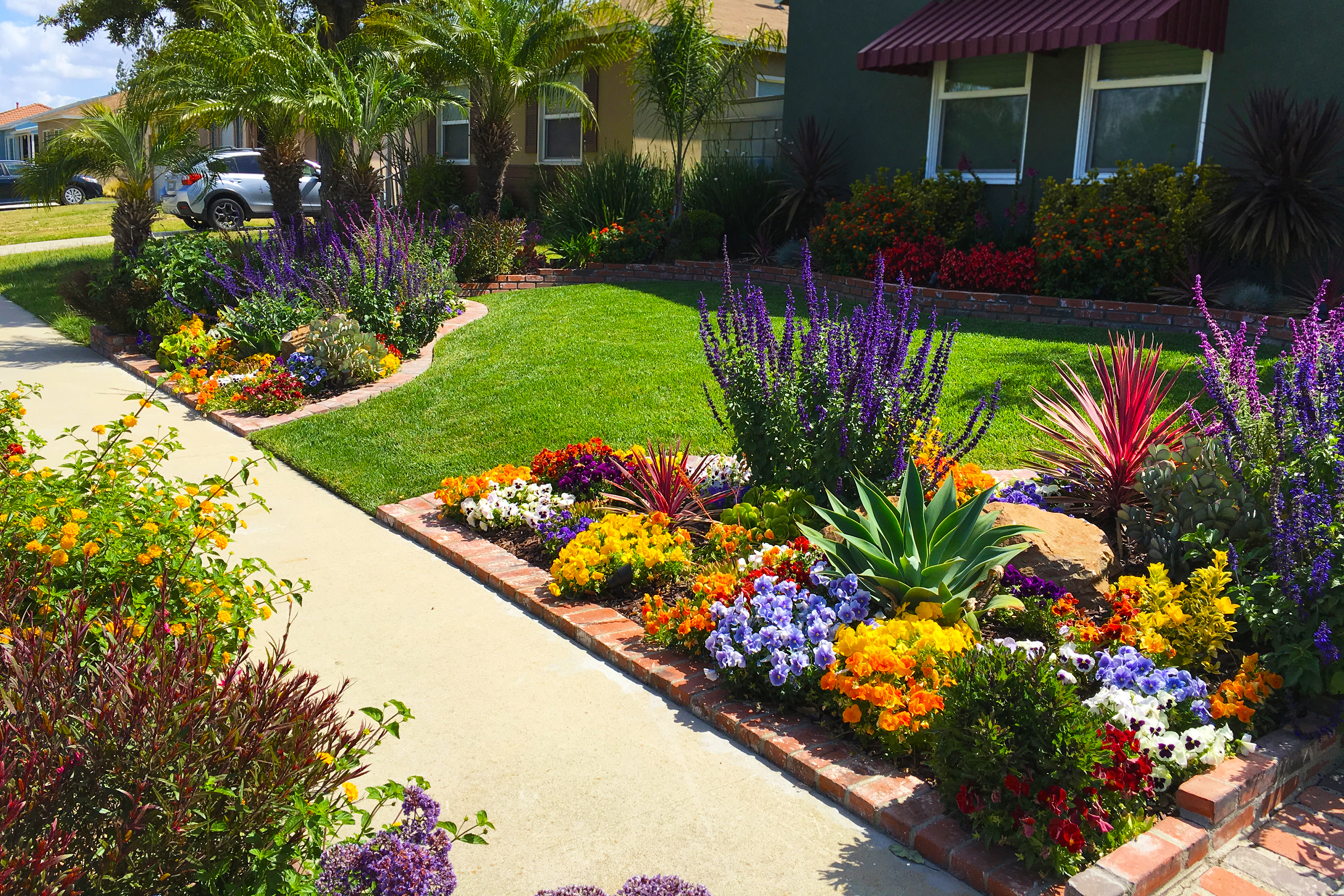Update Your Home with Customized Palm Desert Landscaping Solutions
Update Your Home with Customized Palm Desert Landscaping Solutions
Blog Article
A Comprehensive Guide to Creating and Implementing Effective Landscape Design Solutions
The art and science of landscape design expand past simple looks; they entail a thoughtful combination of design concepts, environmental stewardship, and useful application. What methods can one use to ensure these landscapes not only thrive but additionally grow in consistency with their environments?

Comprehending Landscape Layout Concepts
One might question what fundamental components add to reliable landscape style. At its core, effective landscape style pivots on a number of key concepts that assist the plan and selection of components within an area. These principles consist of unity, rhythm, balance, and percentage, each offering to create an unified outside environment.
Unity describes the cohesive partnership amongst various parts, making sure that they interact visually and functionally. Equilibrium can be accomplished via in proportion or asymmetrical setups, permitting the landscape to really feel stable and inviting. Percentage entails understanding the scale of components in relation to each other and the surrounding atmosphere, promoting aesthetic harmony and comfort.

Evaluating Your Outdoor Space
Prior to implementing the concepts of landscape design, a detailed evaluation of your exterior space is essential. This initial analysis helps specify the scope of your landscaping task and guarantees that your layout aligns with the special characteristics of your building. Begin by evaluating the measurements of your space, taking exact dimensions to recognize the readily available location for numerous components such as gardens, paths, and patio areas.
Next, observe the existing functions of your landscape, consisting of topography, soil quality, and drain patterns. These variables significantly influence plant choice and positioning. In addition, analyze the sunlight exposure across different areas throughout the day, as this will influence the sorts of plants that flourish in your yard.
Consider the microclimates created by frameworks, trees, and various other challenges, as they can influence temperature level and dampness degrees. Take note of any kind of existing plants or hardscape components that you desire to preserve or get rid of. This detailed analysis prepares for a efficient and knowledgeable landscaping service, guaranteeing that your design is not only cosmetically pleasing however also practical and sustainable for years to find.
Lasting Landscaping Strategies
These methods not only advertise ecological equilibrium but additionally improve the practical and visual value of a landscape. Carrying out reliable watering systems, such as drip irrigation, minimizes water waste and guarantees that plants get appropriate wetness (Palm Desert Landscaping).

An additional efficient technique is the critical placement of trees and shrubs to offer all-natural windbreaks and shade, therefore reducing power expenses (Palm Desert Landscaping). Rainfall More Bonuses gardens can be integrated right into the landscape design to take care of stormwater runoff properly, filtering toxins before they enter waterways
Selecting the Right Plant Kingdoms
Picking the right plants for your landscape is important to achieving both aesthetic allure and environmental consistency. The process starts with an understanding of your local environment, dirt conditions, and the details microenvironments within your landscape. Evaluating variables such as sunlight direct exposure, dampness levels, and existing vegetations will assist you select plants that flourish in your special setting.
Think about integrating native plants, as they are well-adapted to neighborhood conditions, need much less upkeep, and support regional wild animals. Additionally, choosing a varied selection of species can improve biodiversity while lowering the risk of disease and bug episodes. It is important to examine the development habits, blooming periods, and seasonal shades of possible plants to develop a dynamic and cohesive landscape.
Moreover, assume concerning the intended use the area; for example, if the location will certainly experience high foot website traffic, go with resilient ground covers. By thoughtfully selecting plants that align with both your ecological requirements and aesthetic goals, you can develop a sustainable landscape that not only boosts your building however additionally adds favorably to the bordering ecological community.

Application and Maintenance Approaches
When the right plants have actually been selected for your landscape, the focus moves to effective execution and continuous maintenance methods. Successful installment begins with correct site prep work, which consists of soil screening to establish nutrient degrees and pH, followed by amending the soil as needed. Very carefully prepare plants according to their growth behaviors and light demands, making certain appropriate spacing to advertise healthy development.
Irrigation is an essential element of execution. Establish a watering routine that takes into consideration the particular demands of each plant species, changing for seasonal changes. Using drip watering systems can enhance water effectiveness and lower runoff.
Maintenance approaches should be carried out to ensure the durability and vigor of your landscape. Normal tasks include weeding, mulching, and pruning to regulate development and avoid illness. Fertilizing should be conducted based on dirt examinations, giving the necessary nutrients without over-fertilizing.
Keeping an eye on for diseases and insects is reference necessary; early discovery can avoid substantial damages. Seasonal adjustments to maintenance routines, such as winterizing perennials and preparing for spring development, will certainly make certain that your landscape continues to be aesthetically enticing and healthy and balanced year-round.
Final Thought
To conclude, efficient landscape design services require an extensive understanding of design principles, thorough analysis of exterior areas, and the application of sustainable techniques. The option of proper plant types plays a vital role in enhancing visual charm and ecological resilience - Palm Desert Landscaping. Effective application and ongoing upkeep additionally guarantee the longevity and vigor of landscapes. By integrating view it now these elements, landscapes can be changed into beautiful, useful atmospheres that promote biodiversity and add positively to community wellness.
One might wonder what fundamental aspects add to efficient landscape layout. At its core, successful landscape layout hinges on several essential principles that direct the plan and choice of elements within a space.Choosing the right plants for your landscape is crucial to accomplishing both aesthetic appeal and environmental consistency. It is vital to review the growth routines, blooming periods, and seasonal colors of possible plants to develop a cohesive and vibrant landscape.
When the appropriate plants have been chosen for your landscape, the emphasis changes to effective application and continuous upkeep strategies.
Report this page